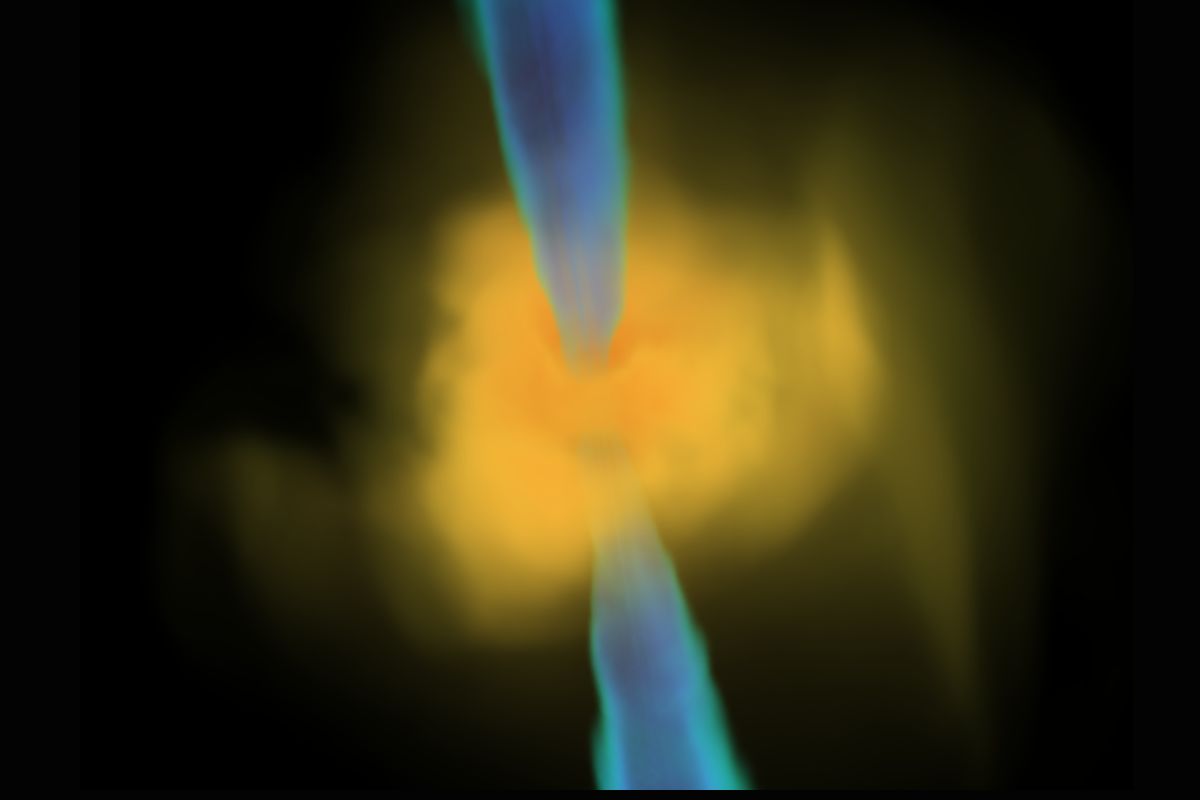
Bondi accretion might sound like a complex term, but it's actually a fascinating concept in astrophysics. Bondi accretion refers to the process by which a celestial object, like a black hole or a star, pulls in gas from its surroundings. This happens due to the object's gravitational pull, which attracts the gas and causes it to spiral inward. Understanding Bondi accretion helps scientists learn more about how stars grow, how black holes gain mass, and even how galaxies evolve. Whether you're a budding astronomer or just curious about the universe, these 32 facts about Bondi accretion will give you a clearer picture of this intriguing phenomenon.
What is Bondi Accretion?
Bondi accretion is a fascinating concept in astrophysics. It describes how a celestial object, like a star or black hole, pulls in gas from its surroundings. This process helps scientists understand how stars grow and evolve.
-
Named After Hermann Bondi: The concept is named after Austrian-British mathematician Hermann Bondi, who first described it in 1952.
-
Gravitational Pull: Bondi accretion occurs when a celestial object's gravitational pull attracts gas from its environment.
-
Accretion Radius: The distance within which gas is pulled towards the object is called the Bondi radius.
-
Astrophysical Importance: This process is crucial for understanding the growth of black holes and the formation of stars.
-
Mathematical Model: Bondi accretion is described by a set of equations that predict how gas flows towards a massive object.
How Bondi Accretion Works
Understanding the mechanics of Bondi accretion can be complex, but breaking it down into simpler terms helps. Here's how it works:
-
Gas Dynamics: Gas in space moves towards the object due to gravitational attraction.
-
Spherical Symmetry: The gas flows symmetrically from all directions towards the object.
-
Steady-State Flow: The gas flow reaches a steady state, meaning the rate of gas falling onto the object remains constant over time.
-
Sound Speed: The speed at which gas moves is influenced by the sound speed in the gas, which depends on its temperature.
-
Critical Radius: At the Bondi radius, the gravitational pull of the object balances the thermal pressure of the gas.
Applications in Astrophysics
Bondi accretion isn't just a theoretical concept; it has practical applications in various fields of astrophysics.
-
Star Formation: Helps explain how stars accumulate mass from surrounding gas clouds.
-
Black Hole Growth: Essential for understanding how black holes grow by pulling in gas from their surroundings.
-
Galactic Nuclei: Plays a role in the behavior of gas around the centers of galaxies.
-
Accretion Disks: Bondi accretion can lead to the formation of accretion disks around celestial objects.
-
X-ray Binaries: Helps explain the behavior of gas in binary star systems where one star is a compact object like a neutron star or black hole.
Factors Affecting Bondi Accretion
Several factors can influence the rate and efficiency of Bondi accretion.
-
Gas Density: Higher gas density increases the accretion rate.
-
Temperature: Cooler gas is more easily pulled in by gravity, increasing the accretion rate.
-
Object Mass: More massive objects have stronger gravitational pulls, leading to higher accretion rates.
-
Relative Velocity: The relative velocity between the gas and the object affects the accretion rate.
-
Magnetic Fields: Magnetic fields in the gas can influence the accretion process.
Observational Evidence
Scientists have gathered observational evidence to support the theory of Bondi accretion.
-
X-ray Observations: X-ray emissions from accreting black holes provide evidence of Bondi accretion.
-
Radio Waves: Radio observations of gas clouds around massive objects support the theory.
-
Infrared Data: Infrared observations help detect the presence of accreting gas around stars.
-
Spectral Lines: Spectral lines in the light from accreting objects provide clues about the gas dynamics.
-
Simulations: Computer simulations of gas dynamics around massive objects support the predictions of Bondi accretion.
Challenges and Limitations
Despite its importance, Bondi accretion has some challenges and limitations.
-
Complex Environments: Real astrophysical environments are often more complex than the idealized models.
-
Turbulence: Turbulence in the gas can affect the accretion process.
-
Radiation Pressure: Radiation from the accreting object can push gas away, reducing the accretion rate.
-
Feedback Mechanisms: Accreting objects can influence their surroundings, creating feedback loops that affect accretion.
-
Observational Limits: Detecting and measuring Bondi accretion in distant objects can be challenging.
Future Research
Ongoing research aims to address these challenges and deepen our understanding of Bondi accretion.
-
Advanced Simulations: Improved computer simulations are helping to model more realistic scenarios.
-
New Observatories: Future observatories will provide better data to study Bondi accretion in greater detail.
The Final Word on Bondi Accretion
Bondi accretion is a fascinating concept in astrophysics. It explains how matter gets pulled into a massive object, like a black hole, due to gravitational forces. This process helps scientists understand the growth of celestial bodies and the dynamics of our universe. Knowing about Bondi accretion can also shed light on the behavior of stars and galaxies.
Understanding these cosmic phenomena isn't just for scientists. It can spark curiosity and wonder in anyone who looks up at the night sky. So next time you gaze at the stars, remember there's a lot more going on out there than meets the eye. Bondi accretion is just one piece of the cosmic puzzle, but it's a crucial one that helps us grasp the universe's vast complexities. Keep exploring, keep questioning, and let your curiosity guide you through the stars.
Was this page helpful?
Our commitment to delivering trustworthy and engaging content is at the heart of what we do. Each fact on our site is contributed by real users like you, bringing a wealth of diverse insights and information. To ensure the highest standards of accuracy and reliability, our dedicated editors meticulously review each submission. This process guarantees that the facts we share are not only fascinating but also credible. Trust in our commitment to quality and authenticity as you explore and learn with us.
